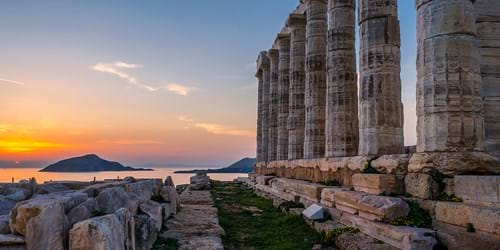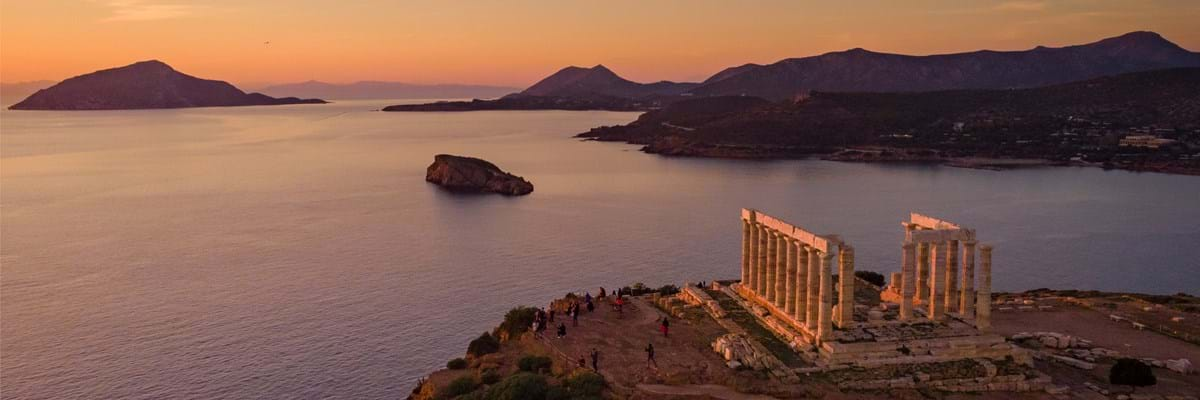For nearly 2,500 years the Temple of Poseidon has been welcoming people to Greece.
It was built on the cliff top of a towering rocky peninsula that juts into the Aegean Sea and, appropriately, dedicated to the sea god Poseidon. Its gleaming white marble was a welcome sight for sailors returning home.
In more recent times the ruins, now considered to be among the best of classical Greece, have welcomed tourists. Cape Sounion, the furthest point along the Athens Riviera from the city, provides views that are spectacular enough to attract coach excursions.
On a clear day five or six Greek islands can be spotted from the cliffs (about 200 ft above sea level) and it is regarded as one of the most perfect places to watch the sunset.
The temple was built about 440BC in the Golden Age of Athens when The Parthenon was going up on The Acropolis. Originally it had 34 Doric pillars (the smooth ones) and 17 are still standing. They have been fenced off in a belated attempt to stop people carving their names in the marble.

The poet Byron did just that when he visited in 1819, five years before he died in Greece. Unlike most other visitors Lord Byron was sufficiently moved to refer to the temple in a poem. His Don Juan includes these lines:
Place me on Sunium’s marbled steep
Where nothing save the waves and I
May hear our mutual murmers sweep.
There, swan-like, let me sing and die.
When the temple was built – on the site of a much earlier temple - it contained a large statue of Poseidon. Parts of the statue found by archaeologists are in the Archaeological Museum of Athens. Traces of a 6th century temple to the goddess Athena and the remains of other ancient buildings have been found nearby.

There is a car park and a café on the site and at the bottom of the cliff beneath the temple is a sandy beach with tavernas and a hotel.
Fans of Percy Jackson books and films are among the visitors. The hero of Rick Riordan stories is demigod Perseus, or Percy, the son of Poseidon and Cape Sounion is included in the popular Percy Jackson excursions. Scenes in the BBC’s spy thriller Little Drummer Girl were filmed at the temple.
According to mythology, the Aegean Sea is named after a king who flung himself off the cliffs at Cape Sounion because of his forgetful son.
King Aegeus of Athens was waiting for his son to return from a mission. A white sail on the ship would mean success, but the ship had a black sail. The king jumped to his death – but his successful son had forgotten to change the sail.
The grieving Athenians named the sea after their king.
Date last updated:



